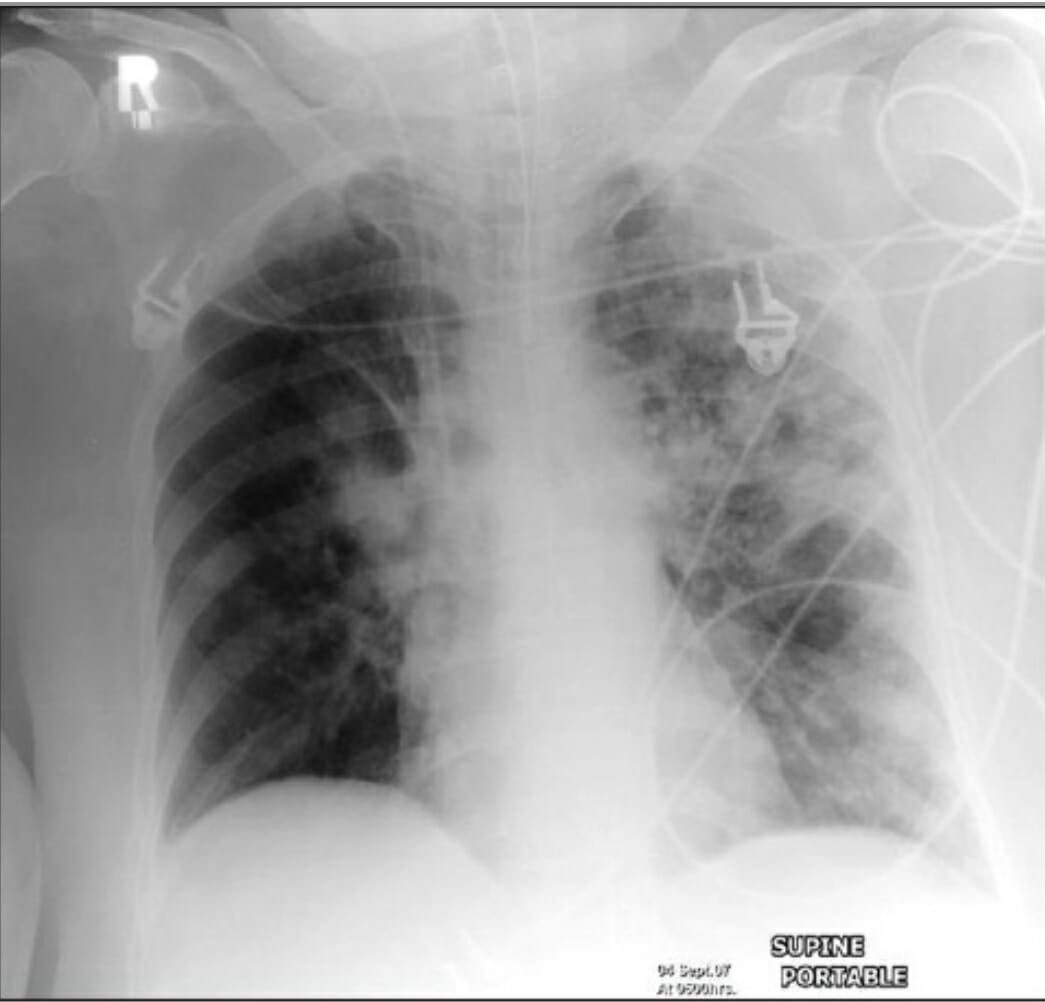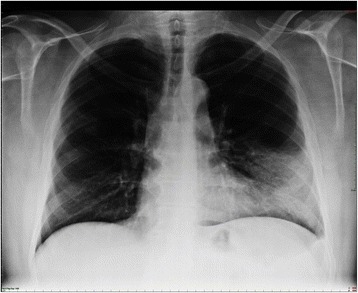Playlist
Show Playlist
Hide Playlist
Pneumonia and Pulmonary Infections: Prognosis
-
Emergency Medicine Bord Pneumonia and Pulmonary Infections.pdf
-
Download Lecture Overview
00:01 Now, I talked about outpatient versus inpatient treatment but moving along, we have a few tools that can help us figure out whether or not someone should be admitted to the hospital. 00:11 So, one of them is the CURB-65 score and it stands for confusion, uremia, so an elevated BUN, respiratory rate, so does the patient have an elevated respiratory rate? What is the blood pressure? Primarily here, we’re thinking about low blood pressure, and are they over 65 years of age? And depending on how many boxes here they tick off leads you to say the patient should be admitted or the patient is safe to be discharged. 00:40 There’s also a score called the pneumonia severity index score which takes in account various risk factors that the patient has as well as physical exam components and comes up again with a score that will help you determine whether or not the patient should come in. 00:55 And although we have these scores and these scoring systems, you also wanna keep in mind whether or not you feel the patient is critically ill, what you feel is the best course of action for the patient, and also to have a discussion with the patient and say, “This is what we’re worried about.” “Do you feel comfortable going home?” And having a low threshold especially for patients who have an underlying illness to consider admitting them to the hospital even though they might not necessarily kind of tick off on the boxes. 01:23 Same thing goes for patients who maybe look reasonably okay but they have less resources. 01:29 You’re concerned they may not be compliant with their antibiotic medication. 01:32 You’re concerned they may not be able to afford their antibiotic medication. 01:35 All of that comes into play when trying to figure out if someone is safe to be discharged from the ED or whether or not they should be observed or admitted to the hospital. 01:44 So, our conclusion here, the classic presentation for patients with pneumonia are cough, chest pain, fever, and difficulty breathing. 01:54 Pneumonia is a significant cause for sepsis so you always wanna keep that in the back of your mind and you wanna do a workup and treatment appropriate for that if you’re concerned about sepsis. 02:04 So, you wanna go ahead and monitor the blood pressure and the heart rate, potentially also to consider checking a lactic acid level. 02:12 There are special populations that deserve attention when discussing pneumonia. 02:16 Pregnant patients are definitely one of them. 02:19 Patients who have underlying lung disease or all patients who you definitely wanna make sure you’re thinking critically about. 02:26 Antibiotic treatment based on community versus hospital acquired pneumonia. 02:31 So, was someone just coming from home or have they recently been in the hospital? And then, also based on outpatient versus inpatient treatment. 02:39 And then, you can use some decision roles that can help you determine appropriate disposition, again, keeping in the back of your mind this always should involve a discussion with the patient and always should involve a little bit of your clinician gestalt.
About the Lecture
The lecture Pneumonia and Pulmonary Infections: Prognosis by Sharon Bord, MD is from the course Respiratory Emergencies.
Included Quiz Questions
In determining the disposition of a patient with pulmonary infection, what is the clinical prediction tool used that takes into consideration five important variables which help determine the need for in-hospital management?
- CURB-65
- Pneumonia severity index
- CRB-65
- DIRE score
- Framingham score
Which of the following statements is true about pneumonia or pulmonary infections?
- Pneumonia is a significant cause of sepsis.
- Patients with pneumonia only rarely have the classical four symptoms of cough, fever, shortness of breath or chest pain.
- Different patient populations of patients may be treated in the same standard way.
- Antibiotic treatments do not usually need to be individualized for each patient.
- Medical decision rules, such as the Pneumonia Severity Index, can replace clinical judgement.
Customer reviews
5,0 of 5 stars
| 5 Stars |
|
5 |
| 4 Stars |
|
0 |
| 3 Stars |
|
0 |
| 2 Stars |
|
0 |
| 1 Star |
|
0 |





